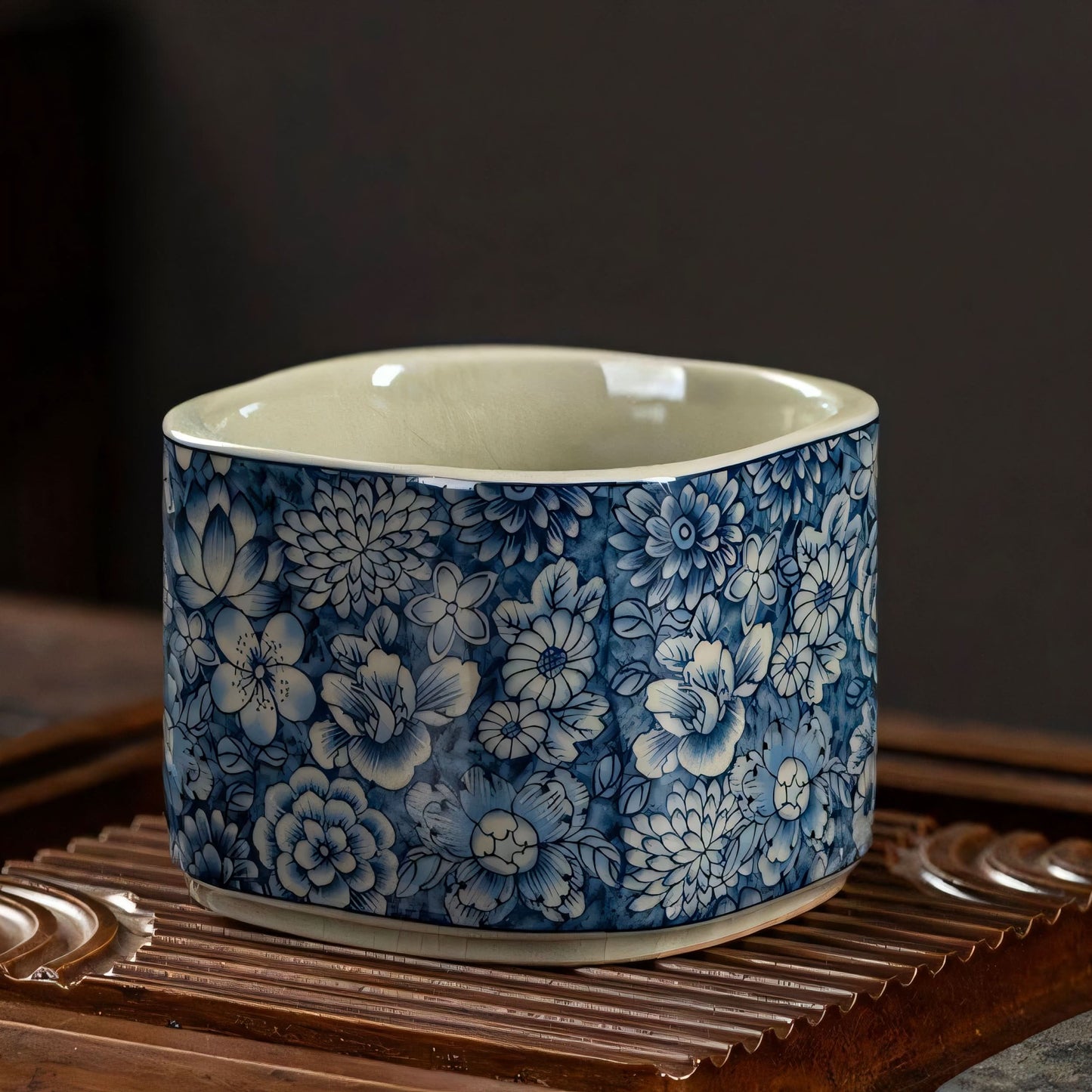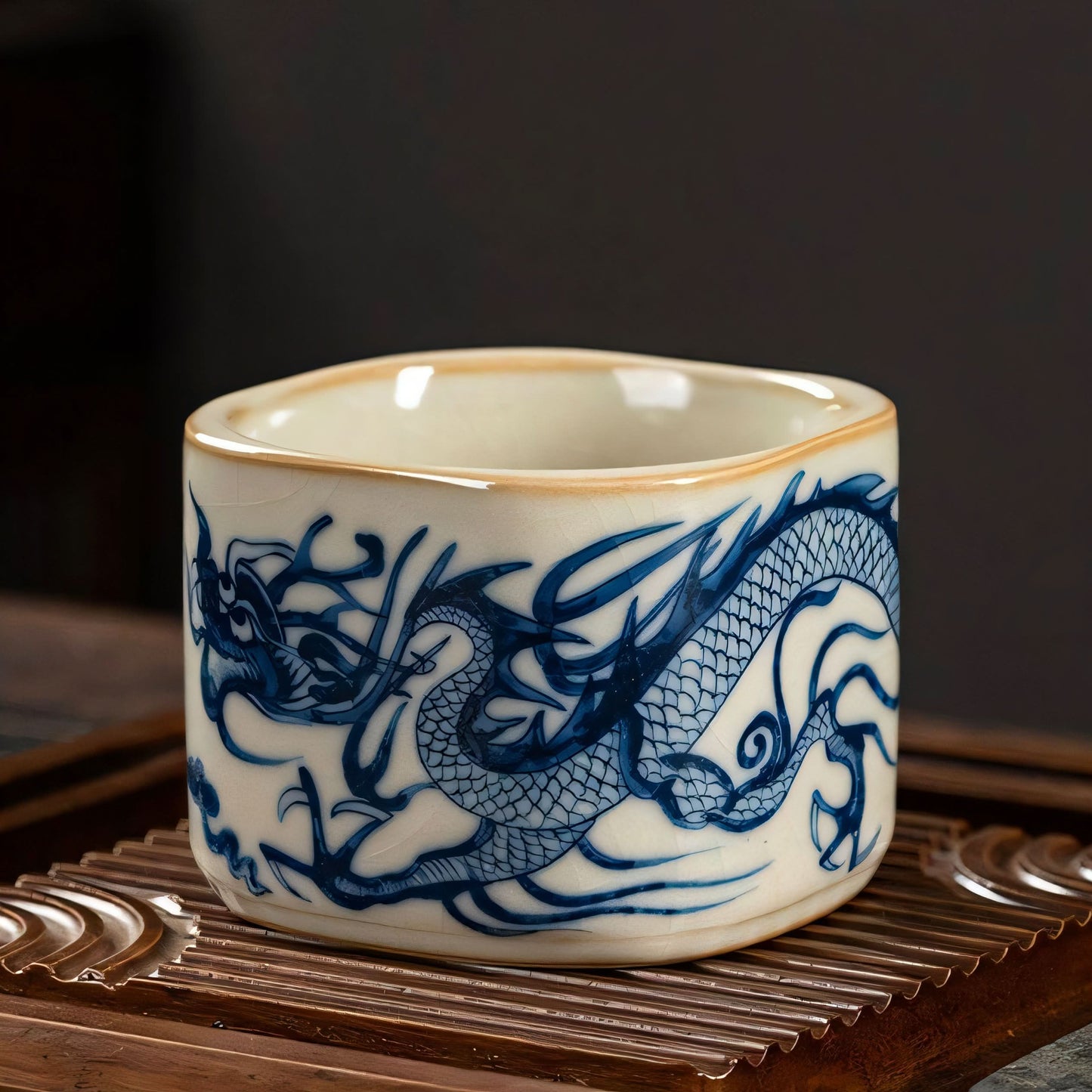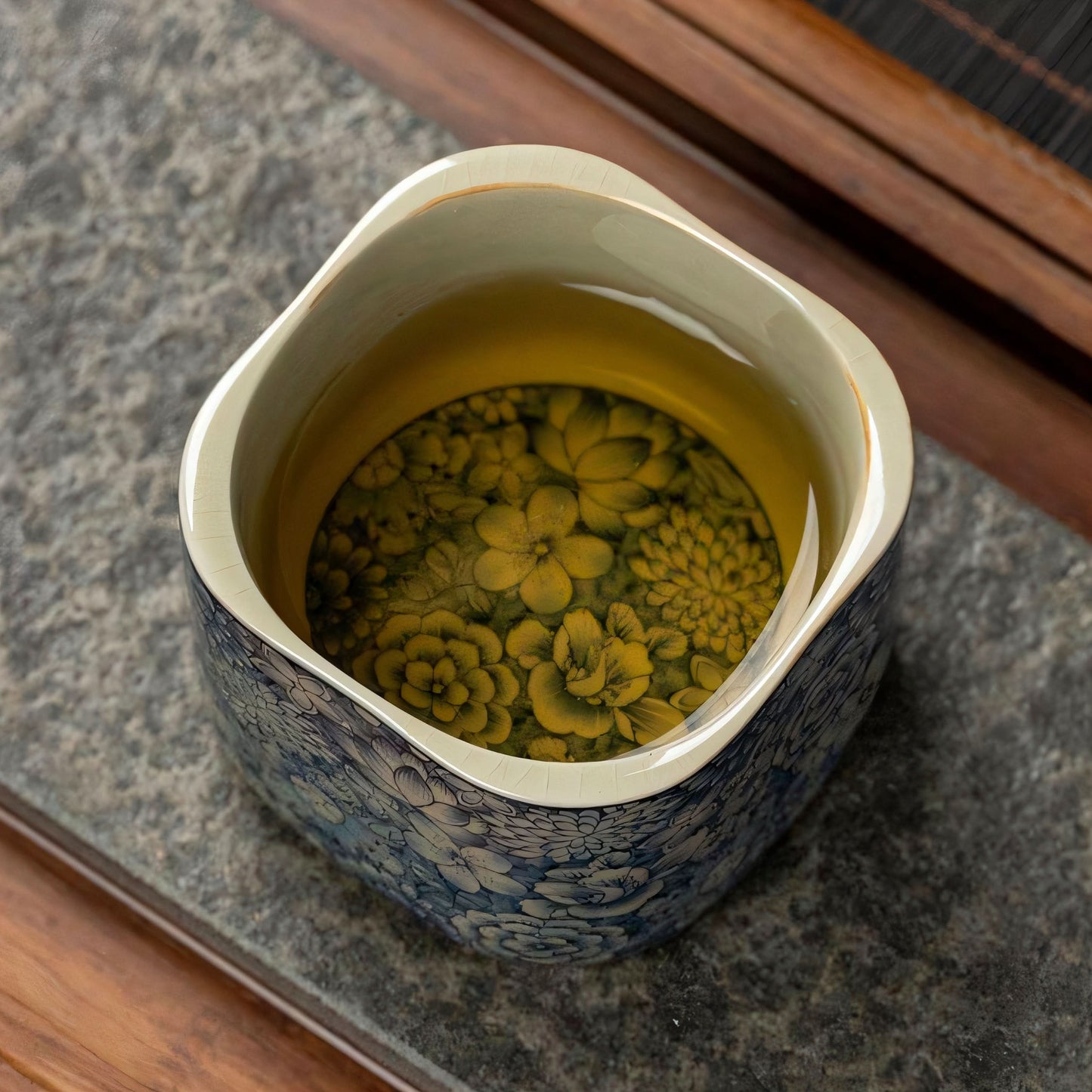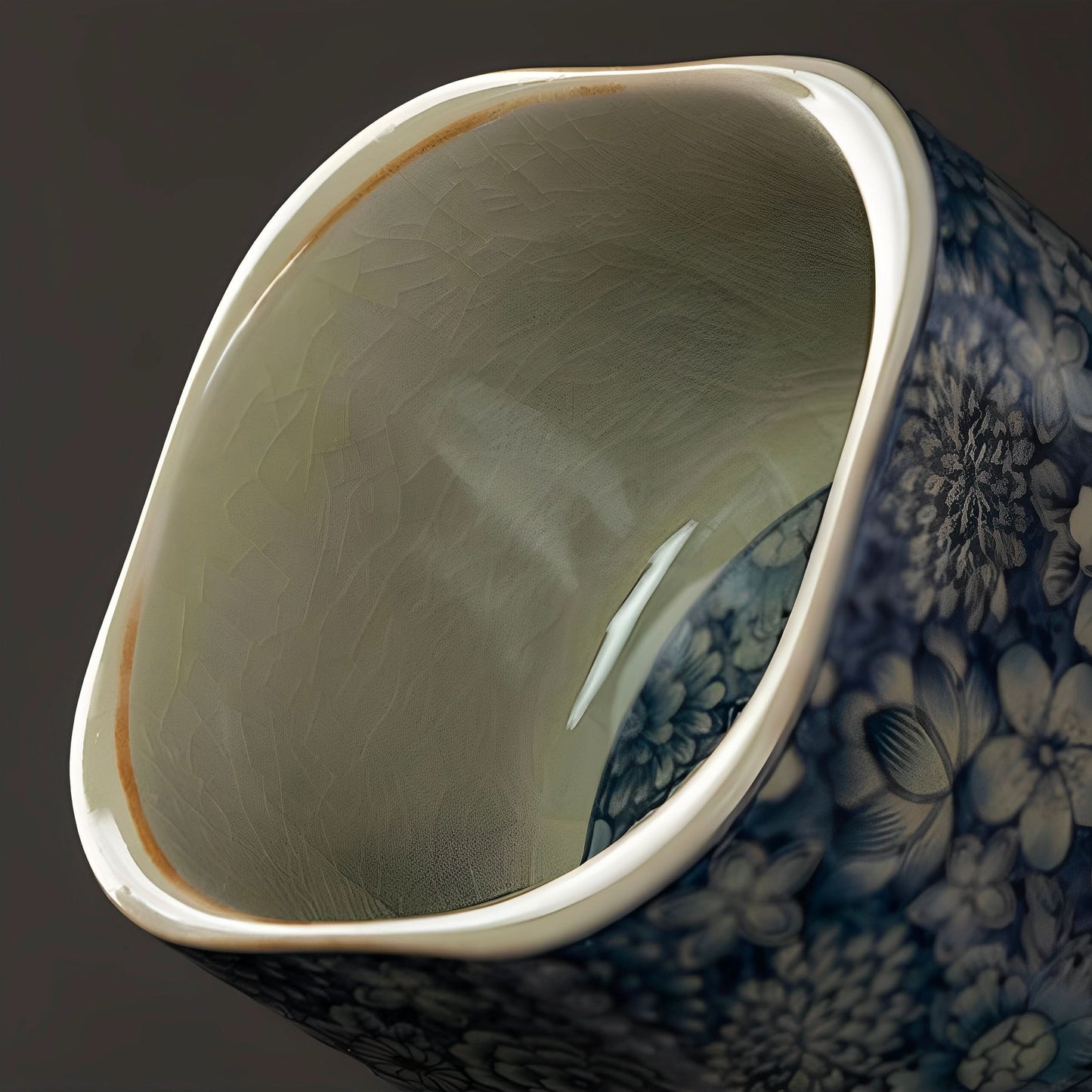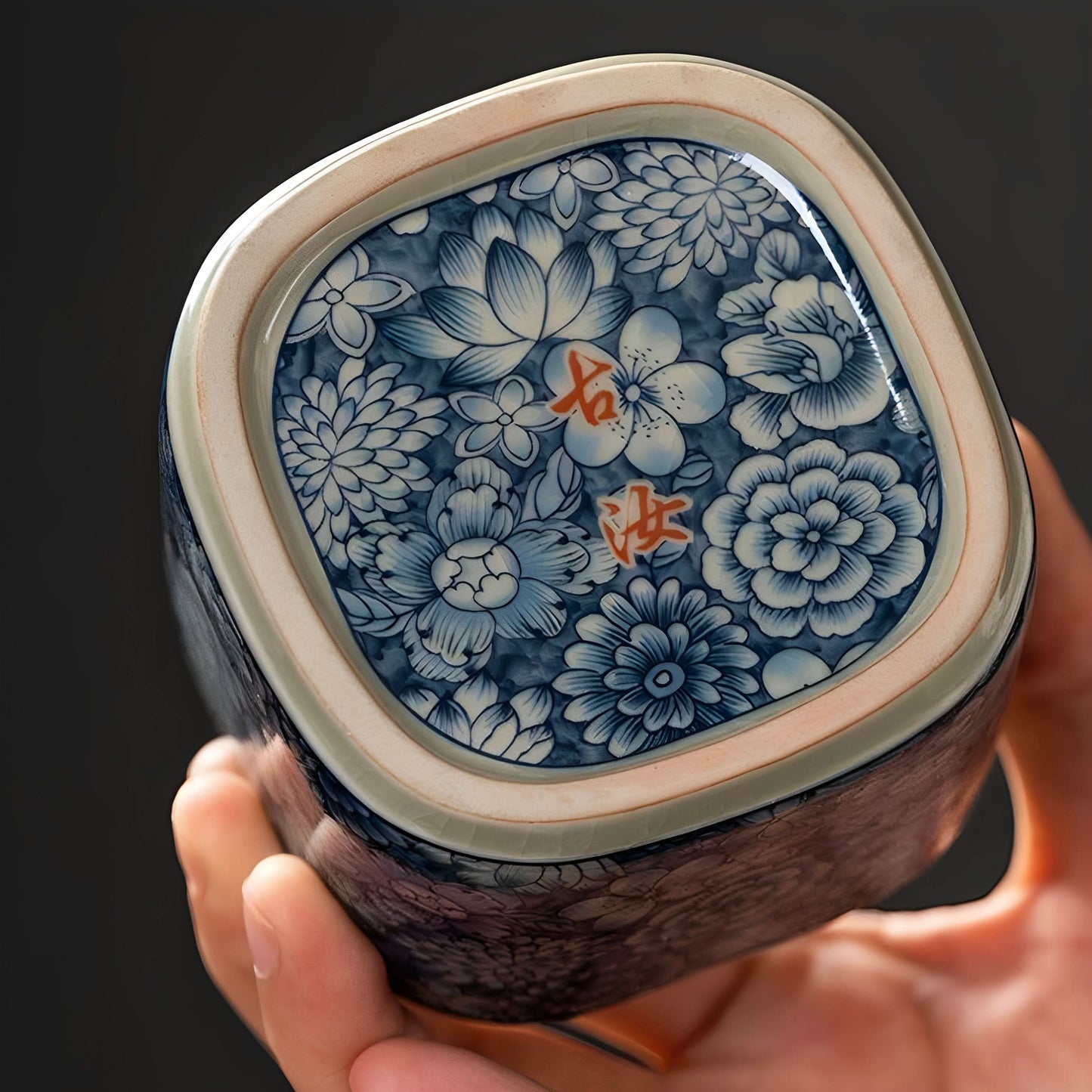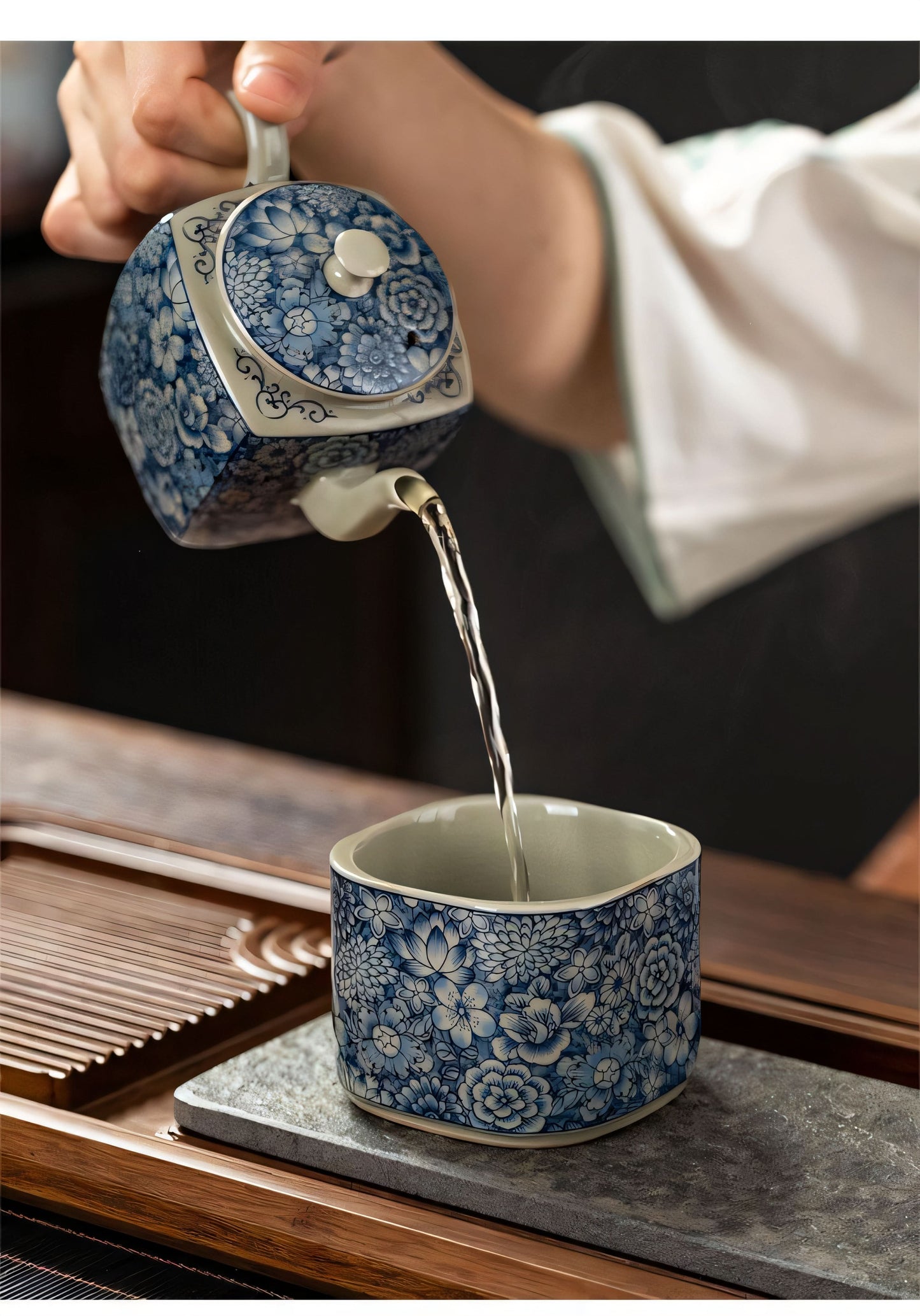Leeculture
Blue-and-White Square Teacup
Blue-and-White Square Teacup
无法加载取货服务可用情况
The Blue-and-White Square Teacup, a masterpiece of Chinese porcelain, embodies the artistry and cultural depth of traditional ceramic craftsmanship. Originating from the Yuan Dynasty (13th–14th century) and flourishing during the Ming Dynasty (1368–1644), this style of teacup is part of the broader category of underglaze blue porcelain, where cobalt oxide is used to paint intricate designs on ceramic bodies before applying a transparent glaze and firing at temperatures around 1,300°C
-
Design and Symbolism:
The square shape of the cup reflects ancient Chinese cosmological symbolism, often associated with the "four directions" (north, south, east, west) or the "four seasons," harmonizing practicality with philosophical meaning. The blue-and-white motifs, typically depicting landscapes, floral patterns, or poetic scenes, are rendered in cobalt pigment, creating a striking contrast against the pure white porcelain -
Technical Excellence:
The application of transparent glaze over cobalt designs enhances durability and gives the surface a glossy, jewel-like appearance.
Ming Dynasty examples, particularly from the Xuande era (1426–1435), are renowned for their "jade-like" glaze and vivid blue hues. Historical records describe Xuande teacups as resembling Han jade vessels, with a luminous finish that "outshines mutton-fat jade -
Cultural Significance:
As a product of Jingdezhen—the "Porcelain Capital" of China—these teacups exemplify the pinnacle of ceramic innovation. During the Ming Dynasty, Jingdezhen’s workshops dominated production, blending refined craftsmanship with artistic expression. One notable design, the "Light Silk Fan Catching Fireflies" teacup, integrates poetic imagery into its decoration, earning praise as a "silent poem on porcelain"
Historical Context:
While blue-and-white porcelain began mass production in the Yuan Dynasty, it was during the Ming period that square-shaped tea ware gained prominence, reflecting both aesthetic evolution and advancements in kiln technology
For collectors, the Blue-and-White Square Teacup represents not only a functional object but also a cultural relic bridging art, history, and tea culture. Its enduring appeal lies in the harmony of form, symbolism, and technical mastery—a testament to China’s ceramic heritage
Share
